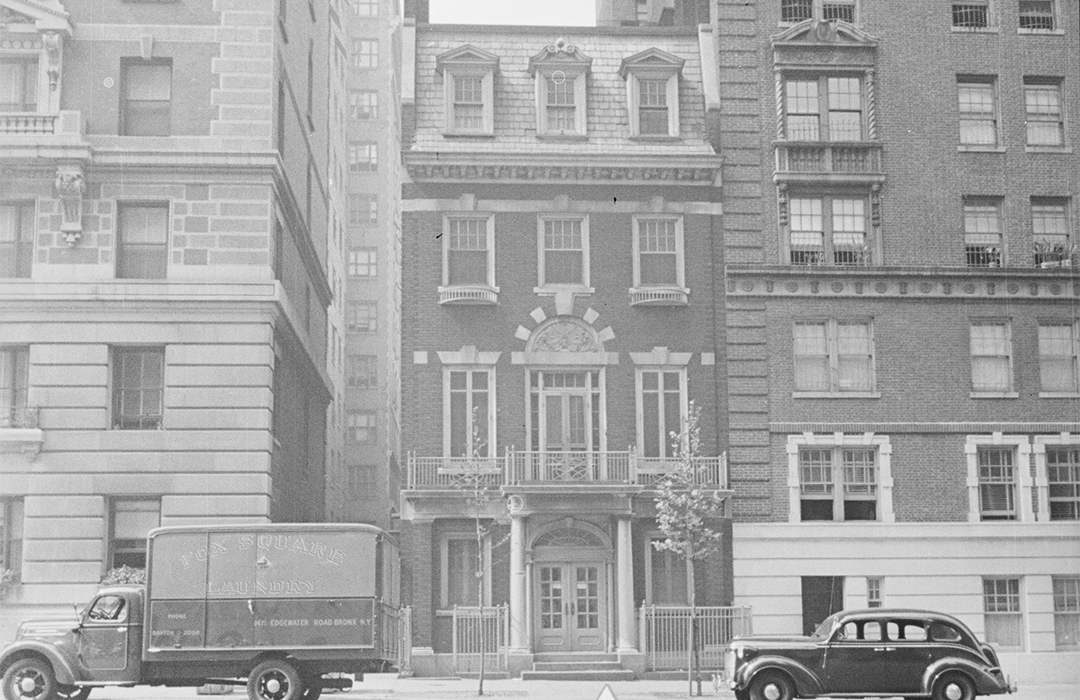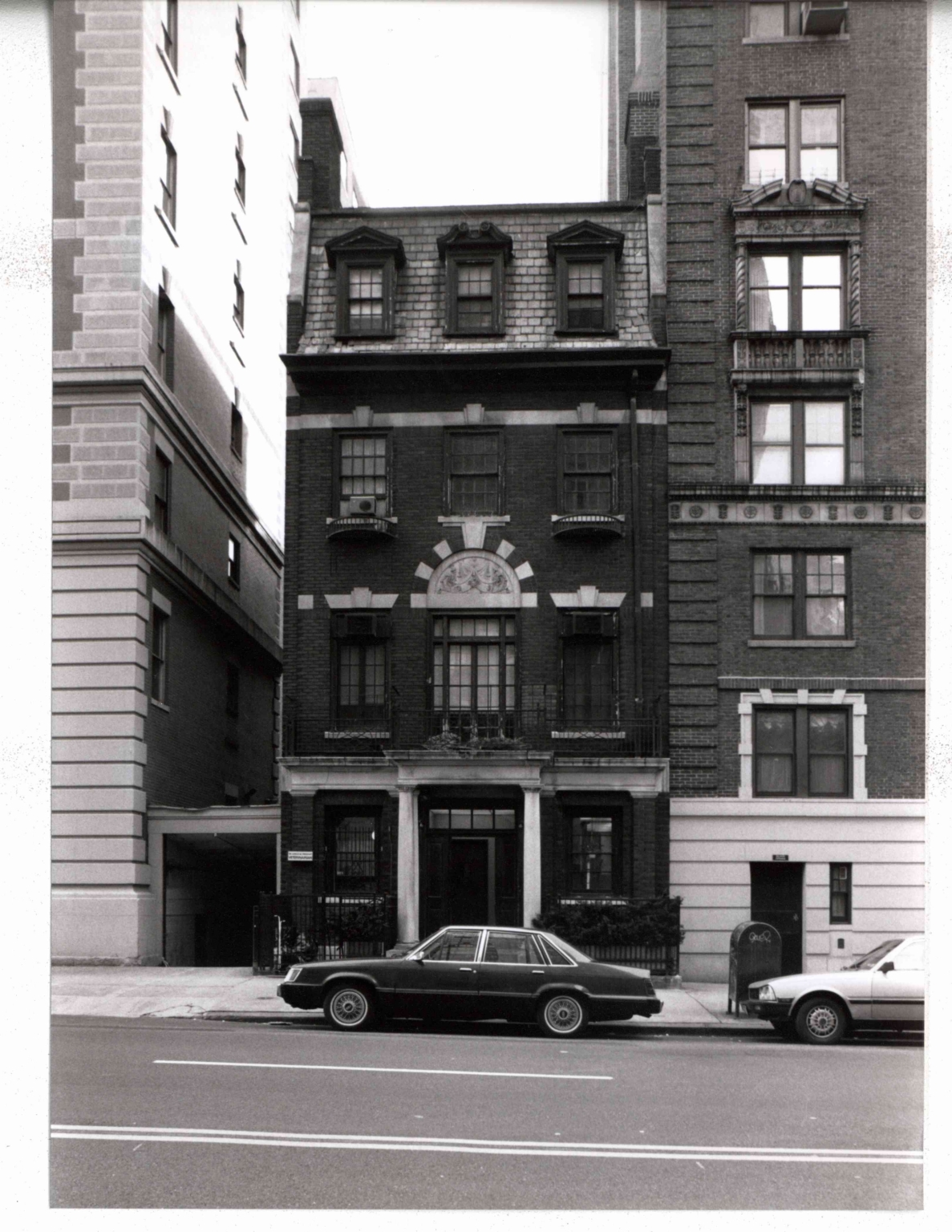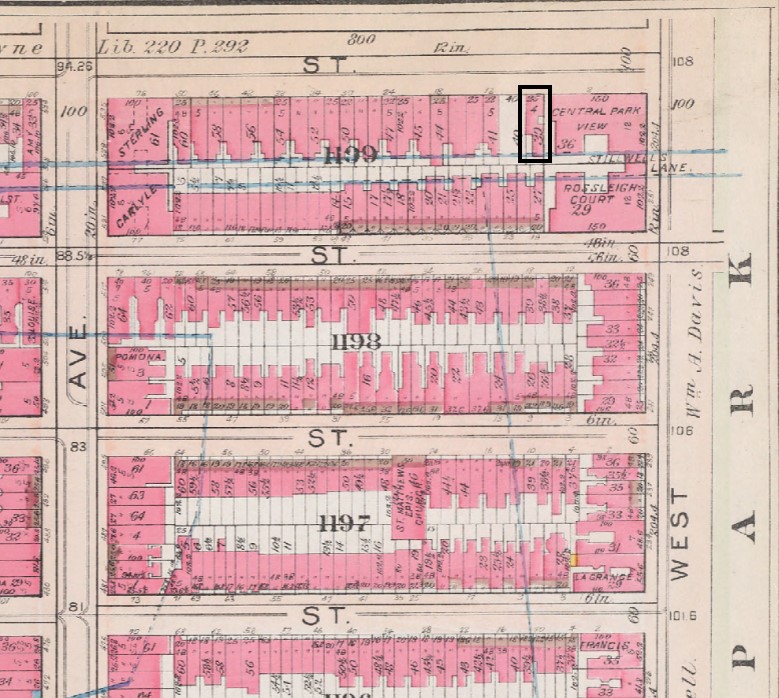
8 West 86th Street
by Tom Miller
The gilded 1890s saw the construction of ornate marble or limestone palaces along the east side of Central Park. However, as the decade wore on, interest in a less fussy form of architecture and residential decoration caught hold. Rooted in America’s early Georgian or Federal styles, it took the form of red brick and limestone residences like the Andrew Carnegie mansion, completed in 1903.
Across the park on the Upper West Side, among the more eccentric rowhouses and mansions, the style appeared as well—as reflected in the Charles Rich house at No. 225 West 91st Street, erected in 1896. Twelve years later Dr. H. F. L. Ziegel and his wife, Beatrice, would join the trend.
On February 28, 1908, The New York Times reported that the Ziegels had filed plans for a four-story residence to be built at No. 8 West 86th Street. “The house will be of Colonial design,” said the newspaper, “with a façade of brick and limestone.”
The Ziegels commissioned the architectural firm of Taylor & Levi to design their home which was completed a year later at a cost of $20,000—about $500,000 today. The result was a charming neo-Georgian home that recalled the pre-Revolutionary streets of Philadelphia, Boston, or New York.
The highly esteemed Dr. H. F. L. Ziegel was the house physician at Mount Sinai Hospital and routinely wrote articles published in medical journals.
The dark red brick was accentuated by gleaming white limestone. Two bandcourses, above the first and third floors, broke the visual weight of the structure. A handsome columned portico supported the focal point of the home—multi-paned French doors opening onto a wrought iron balcony and capped by a delicately carved tympanum. A gently curved mansard punctuated by three dormers finished the motif.
As was most often the case with high-end residences at the time, the deed was signed in the wife’s name. The couple, it seems, held a deep affection for initials; for the title was held by Beatrice S. B. Ziegel. The highly esteemed Dr. H. F. L. Ziegel was the house physician at Mount Sinai Hospital and routinely wrote articles published in medical journals.
The house was completed and the Ziegels moved in just in time for a house wedding. Dr. Ziegel’s cousin, Helen Wile, lived in Rochester, New York. Her finance, Reuben Mills, was a resident of Nashville, Tennessee. Perhaps the two families felt it most convenient to hold the ceremony somewhere geographically in the middle and on December 17, 1909, the ceremony took place in the Ziegel home.
After the Ziegels left No. 8 West 86th Street the medical tradition continued as Dr. D. M. Kaplan moved in by 1921; followed by Dr. M. Herman. Unlike Drs. Ziegel and Kaplan, Dr. Herman’s time in the spotlight was for less-than-respectable reasons.
With Prohibition in high swing, Dr. Herman discovered a way to make easy cash—“prescription bootlegging.” Often forgotten today is the fact that not all alcohol was banned by the Volstead Act. Six distilleries were allowed to manufacture “medicinal whiskey.” They were permitted to sell it to licensed pharmacies which, in turn, could fill prescriptions signed by a physician.
The legally distilled whiskey was highly prized for its quality—not to mention its safety–when compared to bootleg liquor. It made for an alluring proposition for physicians like Dr. Herman who was arrested on March 17, 1926, along with 26 other physicians, six druggists, and four distillery owners. The New York Times explained how “prescription bootlegging” worked.
“The physicians, two of whom are women, are charged with having sold their prescription books at $125 to $150 each to distillery salesmen, who in turn sold them to druggists. The books, it is alleged, were signed in blank so that the druggist could fill them out whenever he sold whisky to a customer.”
On February 11, 1945, the house, still a private home, was leased to Dorothy Jewson. However, its status as a single-family residence would not survive into the second half of the century. In 1953, the house was converted to apartments, two per floor.
Six distilleries were allowed to manufacture “medicinal whiskey.” They were permitted to sell it to licensed pharmacies which, in turn, could fill prescriptions signed by a physician.
A few years later Martha J. Black moved into one of the apartments. Known as Jo Jo to her friends, she was a psychiatric social worker at Mount Sinai Hospital; coincidentally the same hospital where Dr. H. F. L. Ziegel had practiced. A graduate of Swarthmore College and the New York School of Social Work of Columbia University, she was perhaps better known as the daughter of Associate Justice Hugo L. Black of the United States Supreme Court. In 1959, while living here she married Dr. Mario Lewis Pesaresi, a resident psychiatrist at Mount Sinai.
Dr. Ziegel’s medical tradition in the house continued into the 21st century, in a manner of speaking–a veterinary clinic operated on the first floor. A spacious duplex apartment engulfs the second and third floors, while the fourth story still contains two apartments. In 2024, the dwelling will transform into an institutional building for Bard College.
Taylor & Levi’s handsome neo-Georgian home survives beautifully intact; a delightful surprise just steps from Central Park.
Tom Miller is a social historian and blogger at daytoninmanhattan.blogspot.com




